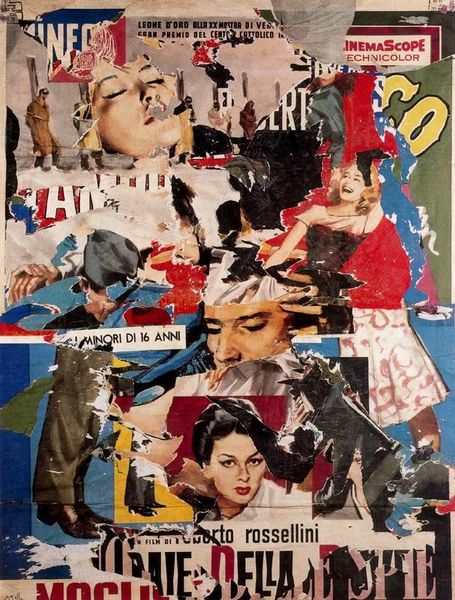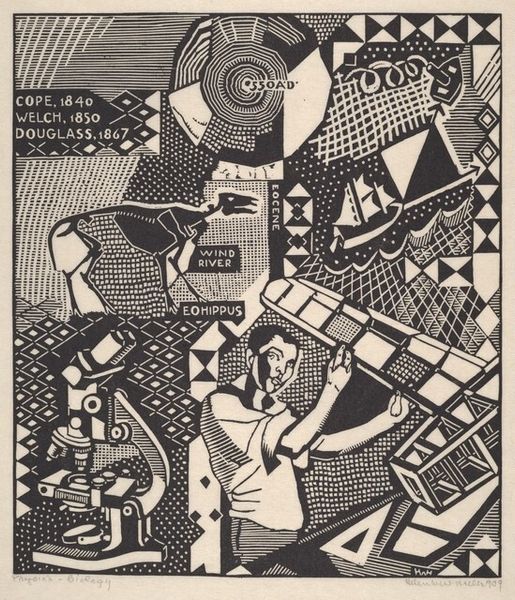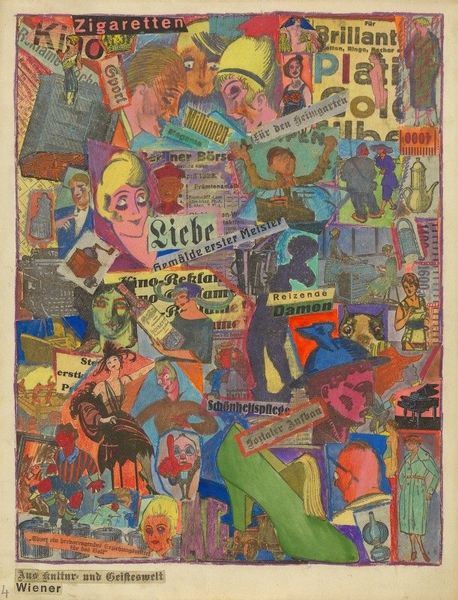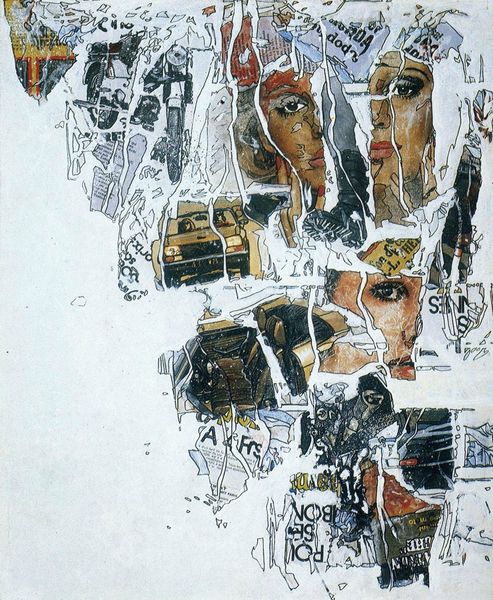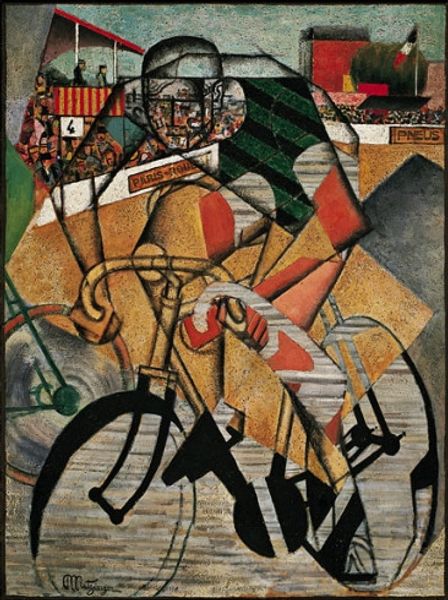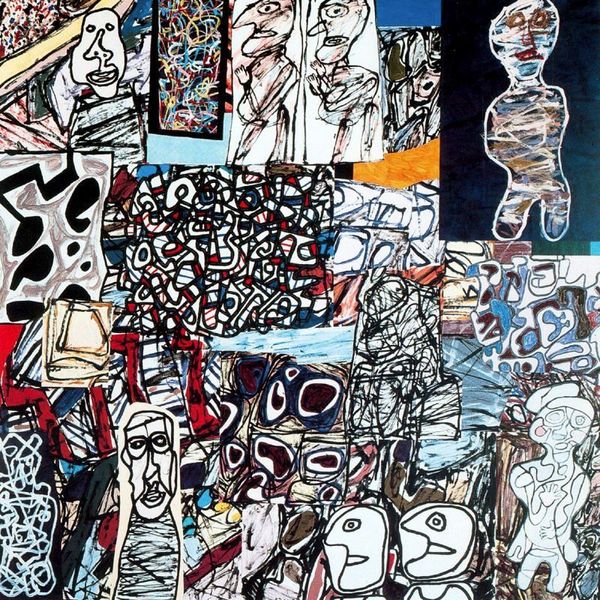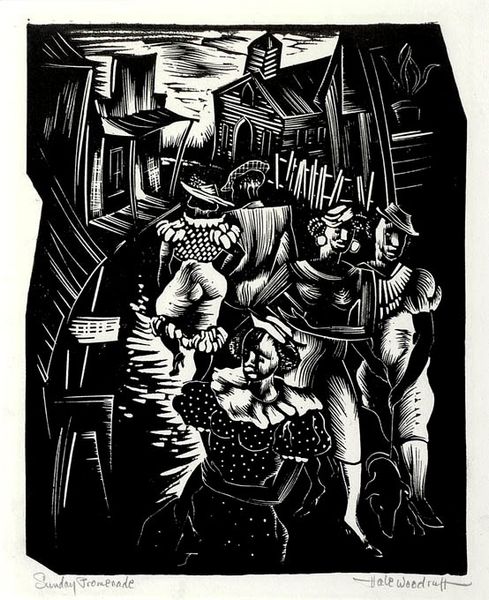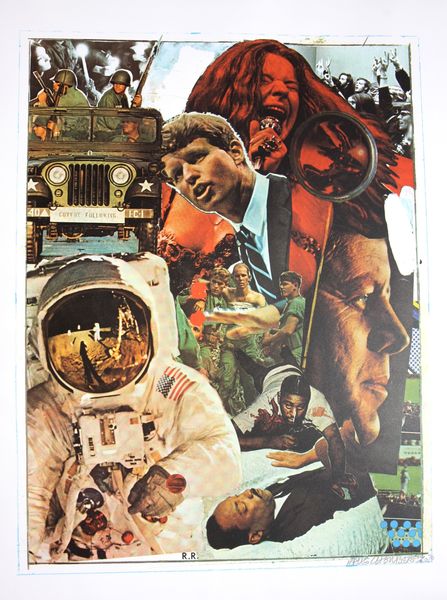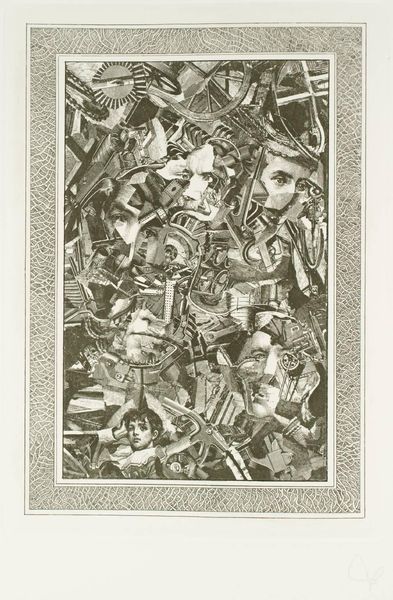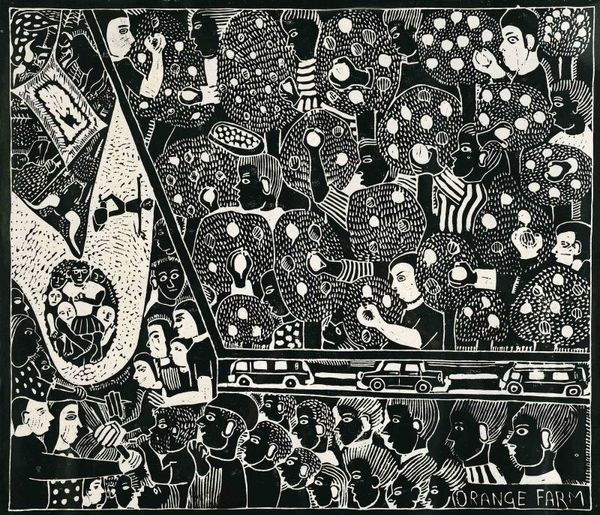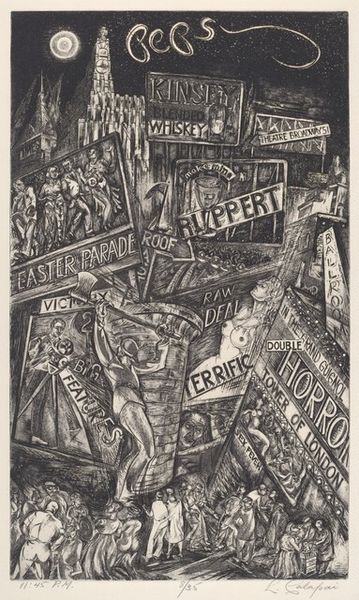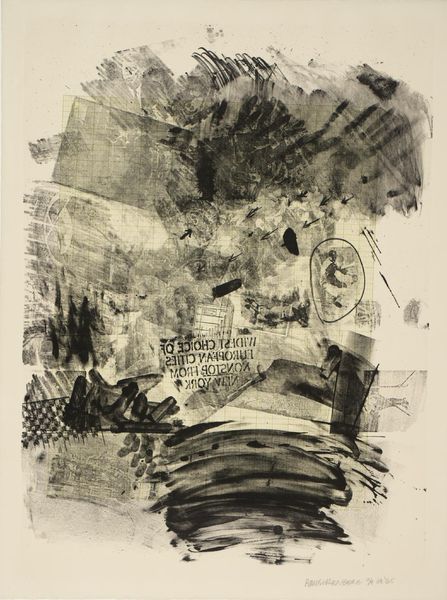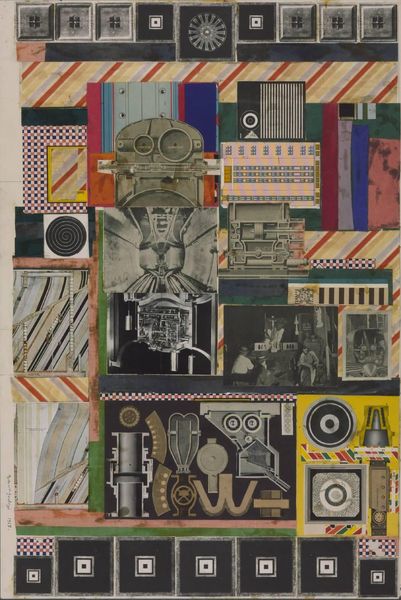
Cut with the Kitchen Knife Through the Beer-Belly of the Weimar Republic 1919
0:00
0:00
hannahhoch
Staatliche Museen zu Berlin, Berlin, Germany
mixed-media, collage, photomontage
#
mixed-media
#
art-nouveau
#
collage
#
appropriation
#
dada
#
geometric
#
photomontage
#
mixed medium
#
mixed media
Copyright: Public domain US
Hannah Höch made this furious and funny thing with paper and glue; a frenzy of images sliced and stuck, each one shouting. I love how she piled these pieces together; it's like the whole world is a thrift store. Check out the way she repeats shapes and colors! It's a riot of textures. And those tiny figures scattered throughout – dancers, acrobats – they’re like little escape routes in this chaotic landscape. Look at the lower left, at those letters HH, the artists signature – it's so discrete, almost like a hidden message. This adds another layer to the piece, it's like she's whispering something just to you. Höch's got this wild collage energy, reminds me of Kurt Schwitters but she uses it to slice up the patriarchy, which is something special, and still feels relevant. Art's always talking to itself, right? It's never about a fixed message, but more like a blurry conversation, full of doubt and second guesses.
Comments
No comments
Be the first to comment and join the conversation on the ultimate creative platform.
